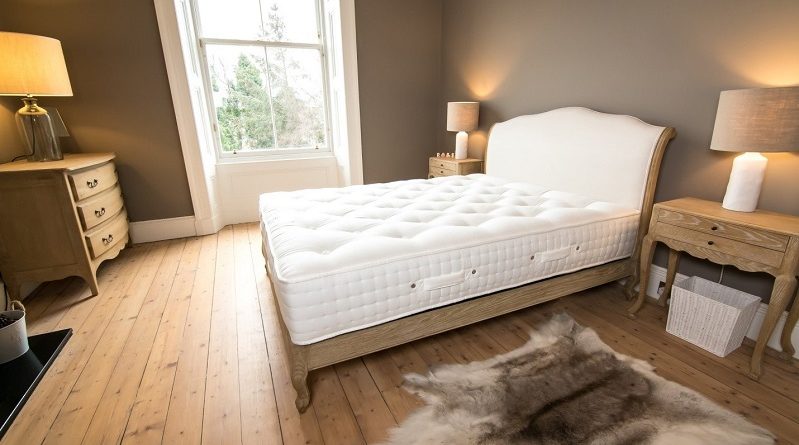Tips on choosing the best mattress for a good night’s sleep
Does the idea of a good night’s sleep feel like it’s just a dream? The secret to a better rest might lie in your mattress.
I’m sure you will agree with me when I say that choosing the right mattress is no easy task. Few things come down to personal preference which is more than choosing a mattress
What makes the decision even harder is the sheer range of options. Mattresses are available in practice+
ally every budget and type you can think of.
Because you’re spending the recommended eight hours per night on it, a mattress is an important investment.
You spend about a third of every day in bed. Whether that time is spent blissfully slumbering or tossing and turning, your mattress is what counts in giving you a good sleep.
How does a worn out mattress affect your sleep?
One way a worn out mattress affects your sleep has to do with the network of capillaries that run underneath your skin.
When you lie on any firm surface with any part of your body for an extended period of time, the weight of it reduces the flow of blood through those capillaries. This deprives the skin of oxygen and nutrients.
Consequently, The nerve cells and pain sensors in your skin to send a message to your brain for you to roll over. Rolling over restores blood flow to the area but it also briefly interrupts your sleep.
There’s no right or wrong way to choose the best mattress when you have plenty of options to pick from. It’s all about personal preference.
Most importantly, your mattress should provide you with the utmost comfort. Without a comfortable mattress, you’ll wake up feeling tired and sore instead of feeling well-rested.
Do you really need a new mattress?
If you wake up with stiffness or pain, it’s a clear sign you need to splash some cash on anew mattress.
A mattress that’s right for you and not worn out will mean you move about less, awaken less and are less disturbed by your partner. You’re also less likely to wake up feeling tired or with any aches or pains.
Keep your mattress for too long and the foam and other materials inside it will start to break down. This compromises on its ability to support your body.
If you’ve been having trouble sleeping, the problem might not be your mattress type, but its age. It’s really important for you to realize that mattresses have a certain lifespan.
It is recommended to keep your mattress for no more than 10 years.
Should I try before I buy?
Besides being the right size, your mattress should provide the correct support and comfort levels. That’s why it’s important to either try before you buy or get a mattress with a trial period.
That means either trying it out in the shop or taking time to lie on it in your natural sleeping position. If you buy one online, looking for one that comes with a 100-day trial period.
You wouldn’t buy a car without test driving it, so why would you invest hundreds or even thousands of dollars in a mattress without trying it out first?
Take any new mattress you’re considering for a test nap. You shouldn’t be embarrassed to go into a store and lay on a mattress for 20 minutes. You better be embarrassed and save yourself the agony in the days to come.
Which mattress is best for you?
Like buying a new car or finding just the right pair of jeans, you should choose a new mattress in person. Here’s how to do it.
- Narrow your options based on body type. Some mattresses are recommended for people of a certain weight. You want to make sure that your body type is appropriate for the mattress.
- Align with your partner. If you share a bed with someone and can’t agree on firmness, (or if you or your partner have conditions like acid reflux where sleeping on an incline is important) you could look for mattresses that allow each side to be adjusted separately.
Know which material is best for you.
The type of mattress each person needs varies upon personal preference. With so many variations of mattress types, often times this can be the hardest choice to make.
You need not to worry. Below I have broken down the most common mattress types to help you make your research and selection a little easier.
- Memory Foam
Just like it sounds, these mattresses only consist of memory foam. Memory foam mattresses are known for their great support, pressure relief and body contouring.
Historically, memory foam had a bad reputation of sleeping hot. However, many newer and more advanced memory foams have been designed with superior cooling properties creating a much cooler mattress than traditional memory foams.
Sleepers who want a great hug, body shaping, contour, pressure relief, and support can get it from this mattress. There is a wide spectrum of foams classified as memory foam and not all memory foams are created equal.
This type of mattress good option for sleepers who want a more pronounced hug than many hybrid or latex mattresses offer.
Latex
Built exclusively from latex foam, these mattresses are known for their cooling properties and comfort. Latex is known for its great responsiveness, comfort, bounce, and cooling.
Sleepers who want great bounce, cooling, and responsiveness can find it here. Additionally, it’s good for sleepers who want foam but want to stay away from the pronounced hug and contour that often comes with memory foam mattresses.
Determine your budget
Choose a budget that is favorable to you. A higher price does not translate to higher quality. It used to be the case that a cheap mattress was a false economy.
That’s not to say that mattresses costing thousands of pounds aren’t worth it, just make sure to do your research first.
Warranty
Check the warranty not only for the number of years it lasts but also for the fine print. Most warranties cover manufacturing defects which will probably happen quite quickly – for example, a popped spring, or foam not bouncing back.
But if something happens and you haven’t used the recommended bed base or have failed to use a mattress protector when they insist you need one, the warranty could be invalid.








